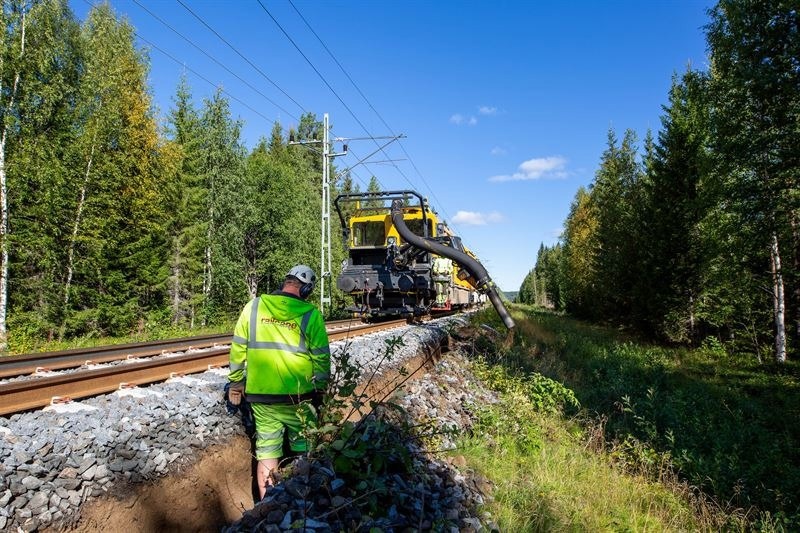In northern Sweden, a new green industry is being formed, and the railway is a central part of climate-smart and efficient transport. There is also a general increase in demand for both freight and passenger transport, which puts the focus on railway maintenance. Several of the projects in Trafikverket's maintenance plan for 2021-2024 can now be found in the north of Sweden.

Image Credit: Railcare Group
"We have noticed that there are more maintenance projects in northern Sweden during the year. Since we work with preparatory work, for example before track replacements, we are often the first to start working," says Robert Jonsson, Project Manager at Railcare AB.
Railcare's contracting operations are now working on two parallel projects on railways in the north. On the Malmbanan, parts of the track are being investigated with trial holes and ground samples for upcoming maintenance work. On the Pitebanan, between Älvsbyn and Piteå, cable lowering is being carried out ahead of the track replacements in 2024.
"Here at Pitebanan, parts of the track replacement have been done in 2022. The remaining track and ballast replacement will take place in 2024. To facilitate this work and not damage the cables, we are lowering them further down," says Robert.
The distance to be lowered is about 50km and the project is about halfway through. To help them, the operators are using Railcare's MPV (Multi Purpose Vehicle), which is the world's largest battery-powered railway maintenance machine. Using vacuum technology, the MPV works like a large vacuum cleaner.
"The suction nozzle first locates the cable in its current location, and when the material under the cable is successively sucked up, it quickly places them at the right level. All material is then refilled by the same machine," says Robert.
The MPV is a vehicle with a versatile range of use. In addition to cable handling using vacuum technology, it can also be used for ballast replacement and drainage. The 121-tonne machine needs to be loaded after six to eight hours, and by then it has suctioned close to 200 cubic metres. Machine operator Emil Rydén has worked at Railcare since 2014 and controls the MPV efficiently with an experienced hand to lower the cables. Emil says:
"It is clear that battery operation reaches its full potential in tunnels and underground, but it feels fantastic to also be able to work with it above ground. Once the next-generation MPV is up and running, which allows charging using pantographs, we will be able to operate pretty much non-stop.
It feels like our MPV is in its right region here in the north, where innovative industries create new and better solutions for the future," concludes Robert Jonsson.